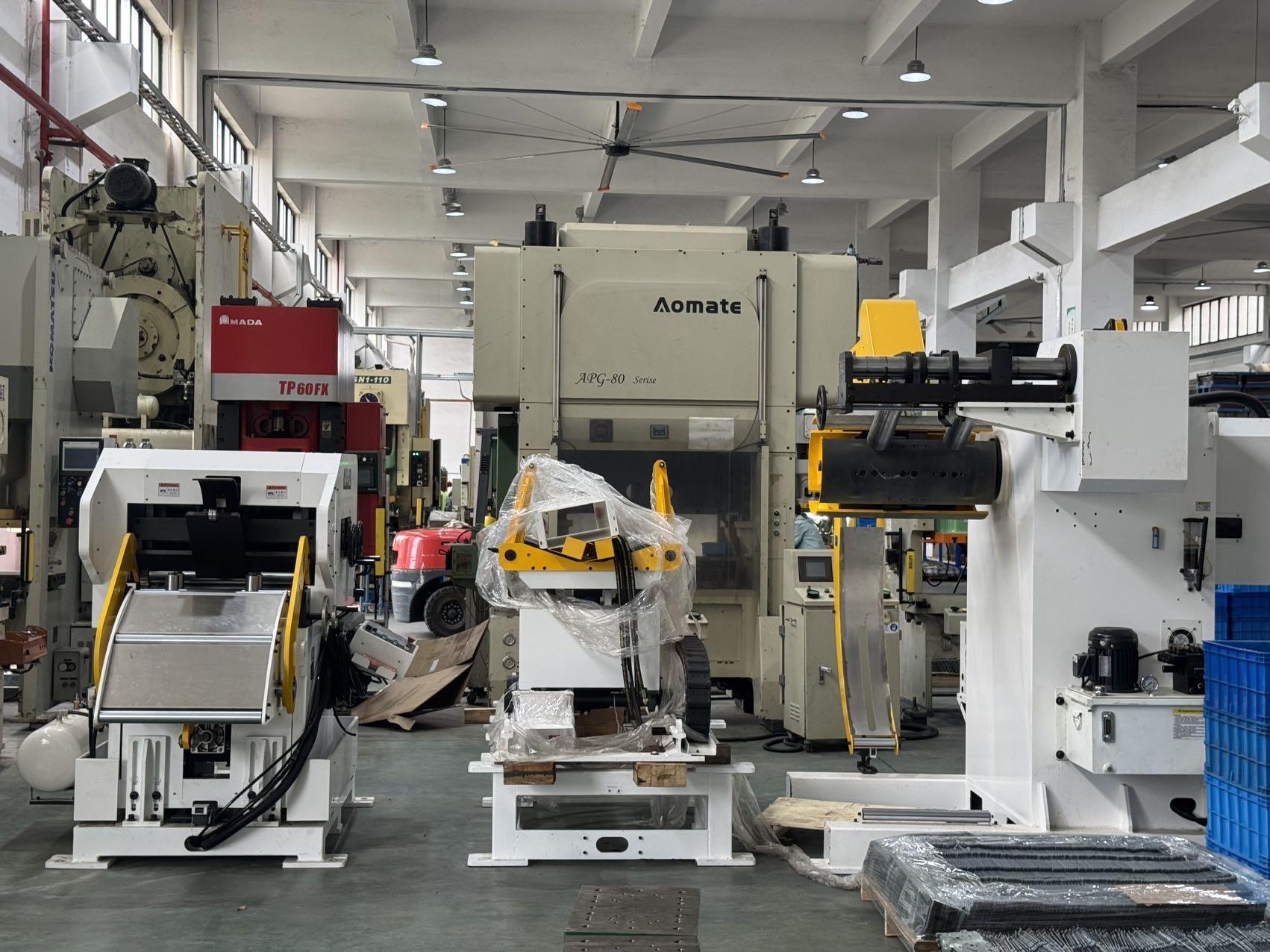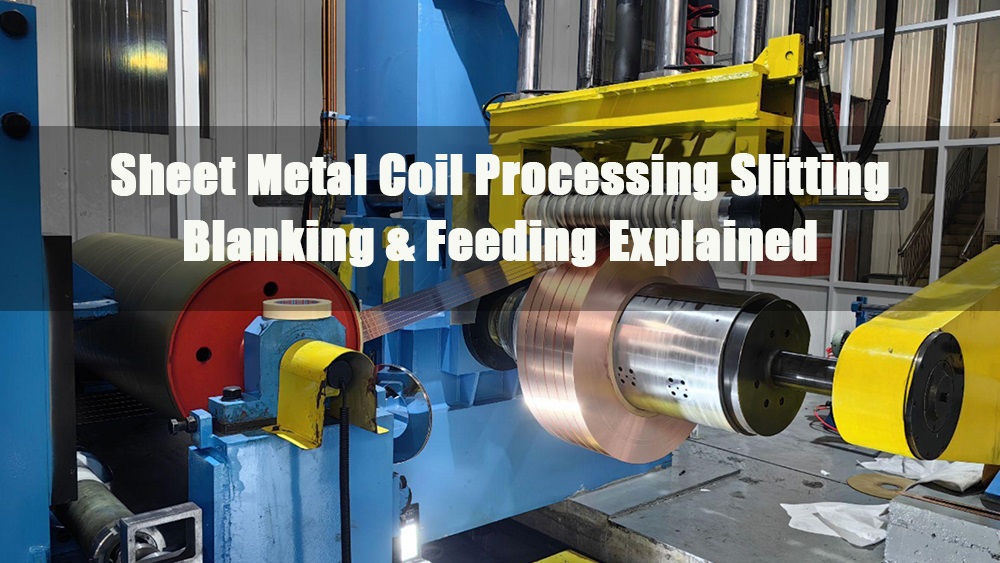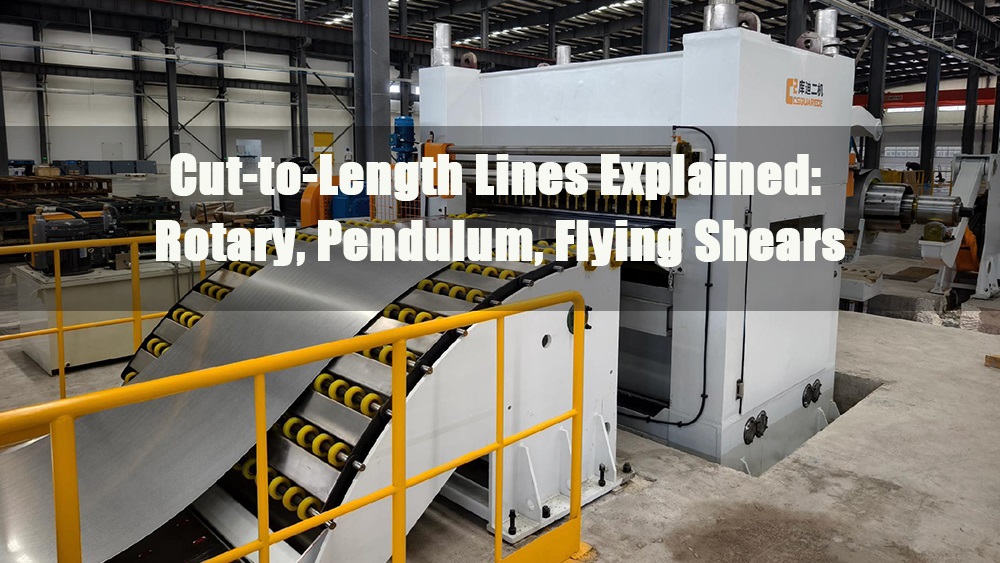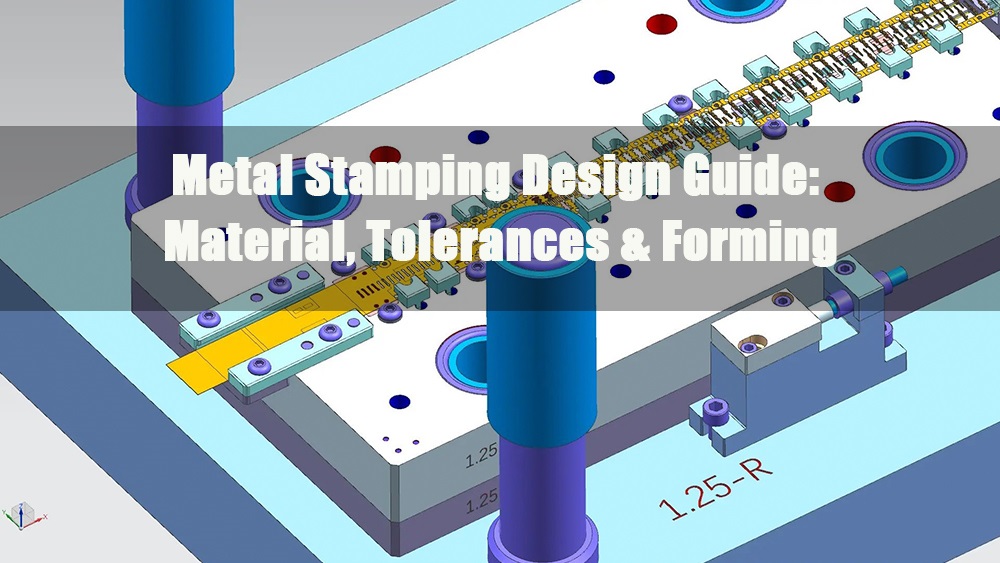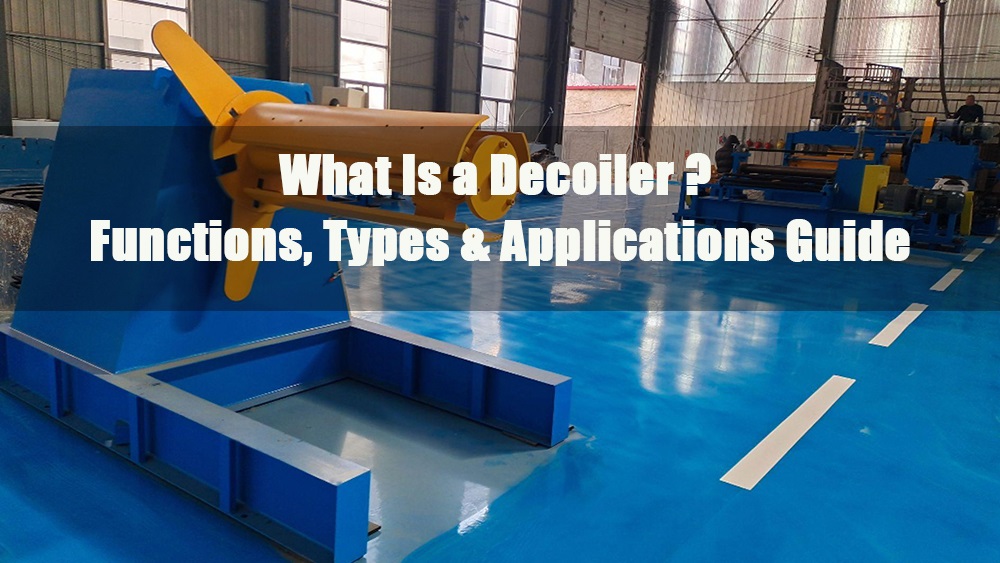
- 1.0What Is a Decoiler?
- 2.0How a Decoiler Works
- 3.0Main Components of a Decoiler
- 4.0Comparison of Decoiler Types with Coil Specifications
- 5.0Typical Industrial Applications
- 6.0Key Parameters for Selecting a Decoiler
- 7.0Maintenance and Safety Guidelines
- 8.0Decoiler vs Uncoiler vs Straightener: What’s the Difference?
- 9.0Conclusion
- 10.0Frequently Asked Questions (FAQ) About Decoilers
In modern automated manufacturing, the decoiler plays a vital role as the first-stage equipment in coil material processing. It is widely used across industries such as metal fabrication, stamping production, roll forming, laser cutting, coating, and electronics. A decoiler not only affects the overall stability of a production line but also directly impacts production efficiency, material utilization, and final product quality.
1.0What Is a Decoiler?
A decoiler is a specialized machine designed to uncoil rolled materials (such as steel coils, stainless steel, aluminum, plastic film, or paper) and feed them continuously to downstream processing equipment like straighteners, feeders, shearing machines, or presses. Typically placed at the beginning of an automated production line, the decoiler provides a steady and controllable material input.
In high-efficiency production environments, decoilers are commonly used alongside straighteners and feeders to form a “decoiling–leveling–feeding” system, which is essential in industries such as automotive manufacturing, home appliance stamping, building materials, HVAC duct production, and precision sheet metal fabrication.
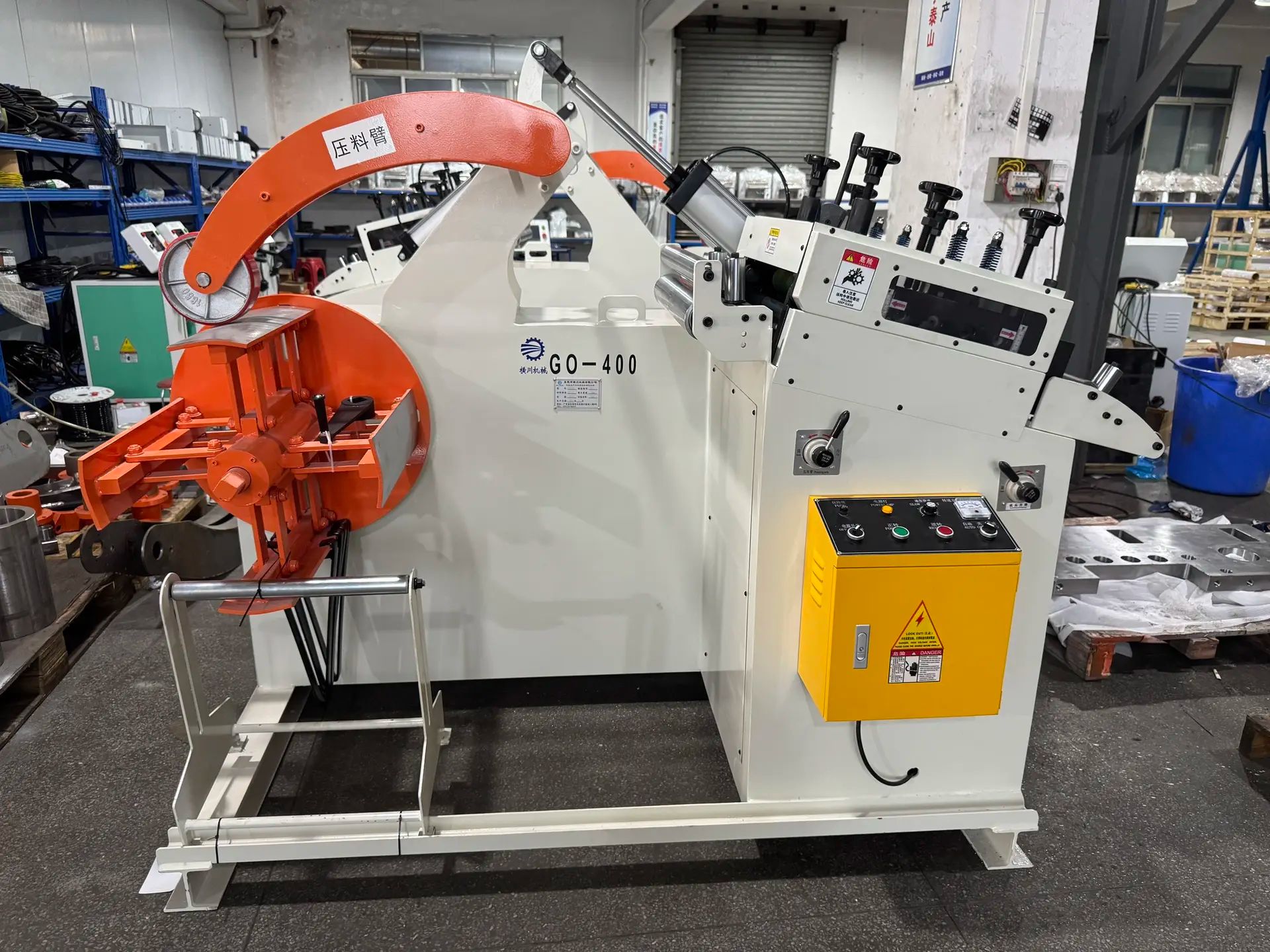
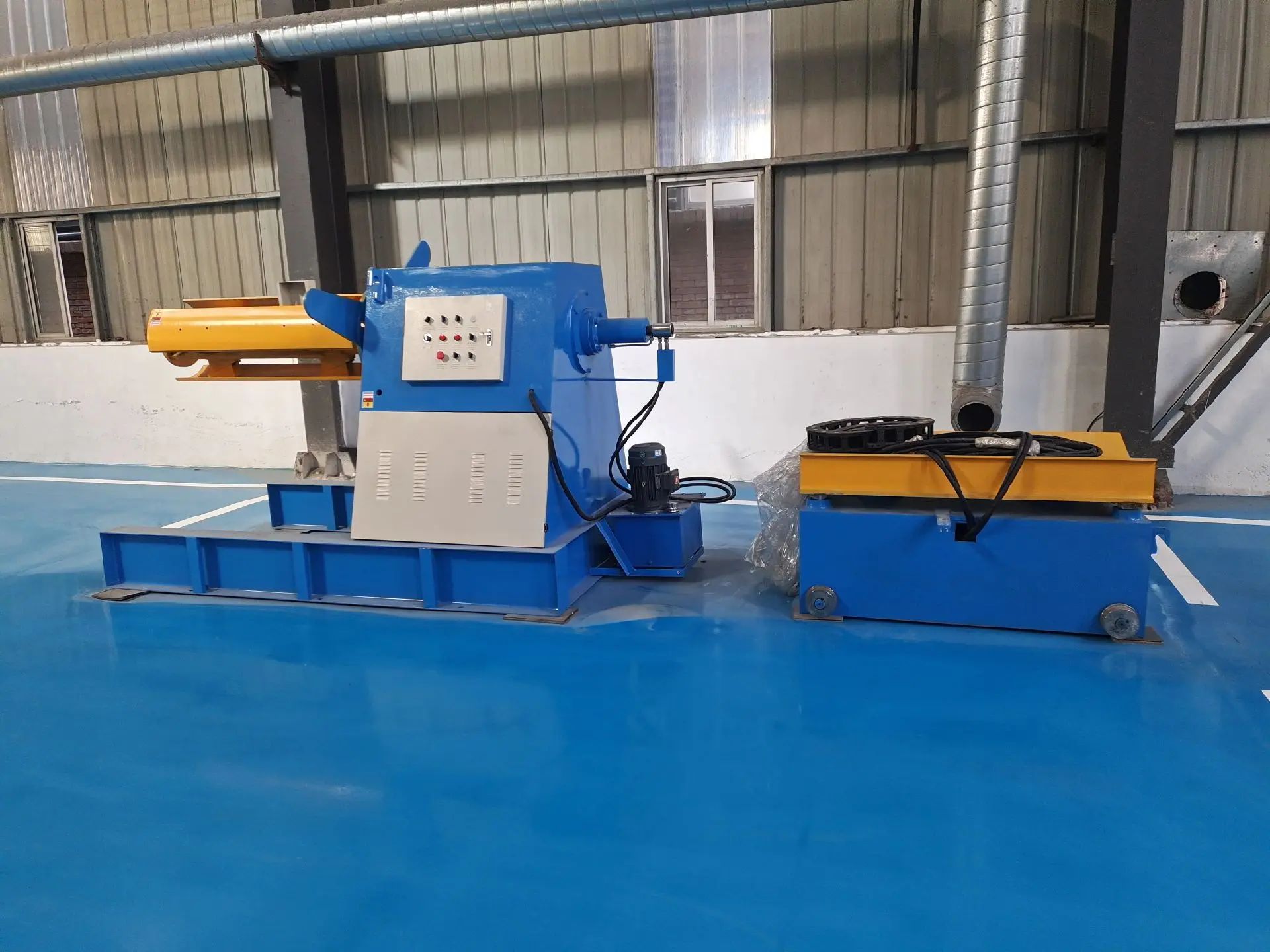
2.0How a Decoiler Works
The decoiler works by gripping the coil with its mandrel and slowly releasing the material through a motor or hydraulic drive. To prevent material rebound, slack, or wrinkling, the system includes tension control mechanisms to ensure stable and continuous output.
Basic Working Steps:
- Coil Loading: The coil is loaded onto the mandrel using a crane or an assisted coil-loading cart.
- Expansion and Centering: The mandrel expands mechanically or hydraulically to clamp the coil core securely.
- Start Uncoiling: The motor drives the rotation of the coil, releasing material at a controlled rate.
- Tension Control: Tension is automatically regulated via pressure arms, loop control sensors, or induction systems.
- Material Feeding: The decoiled material is fed smoothly to the straightener, feeder, or press for further processing.
Some advanced models feature auto start-stop functions. When sensors detect the end of the coil or a preset material length, the system automatically stops or resumes feeding, enhancing automation and operational safety.
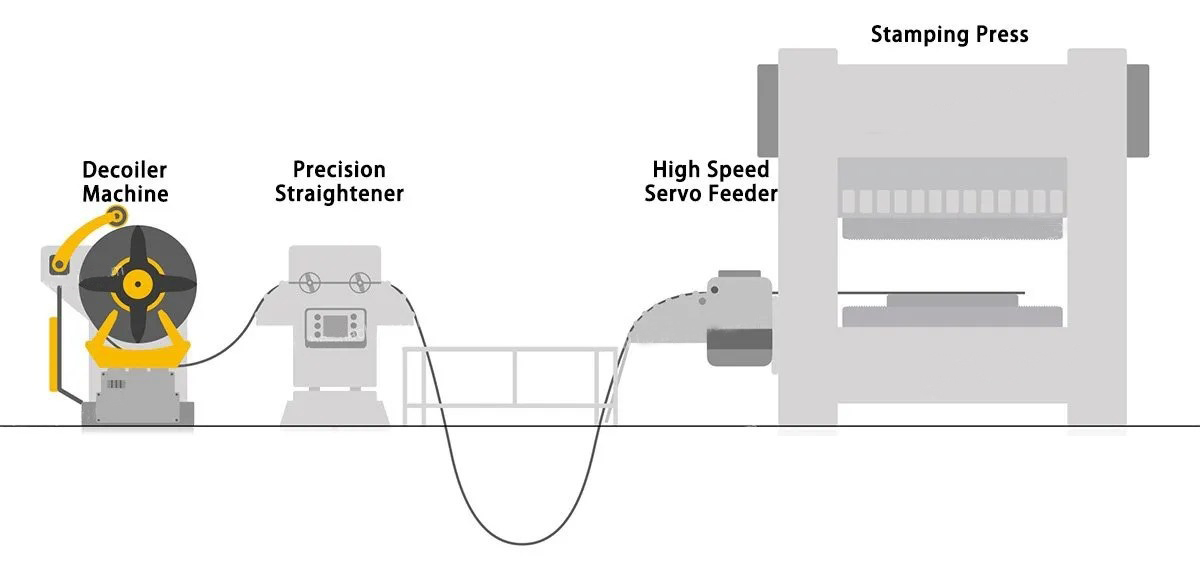
3.0Main Components of a Decoiler
Though compact in appearance, a decoiler is composed of well-integrated parts that ensure efficient and reliable operation.
| Component | Description |
| Mandrel (Main Shaft) | Supports and clamps the coil; expands mechanically or hydraulically. |
| Drive System | Typically consists of a motor and gearbox; may use variable frequency or servo drives. |
| Tension Control Unit | Includes pressure arms, loop arms, or sensors to maintain optimal tension. |
| Sensing Devices | Includes photoelectric sensors or limit switches to manage start/stop logic and tension. |
| Control System | Manual or PLC-based system for adjusting speed, sequence, and interlock logic. |
| Safety System | Includes emergency stop buttons, protective covers, and anti-pinch features. |
Common Types of Decoilers and Their Applications
Based on structural design, drive mechanism, and coil specifications, decoilers can be classified into several types:
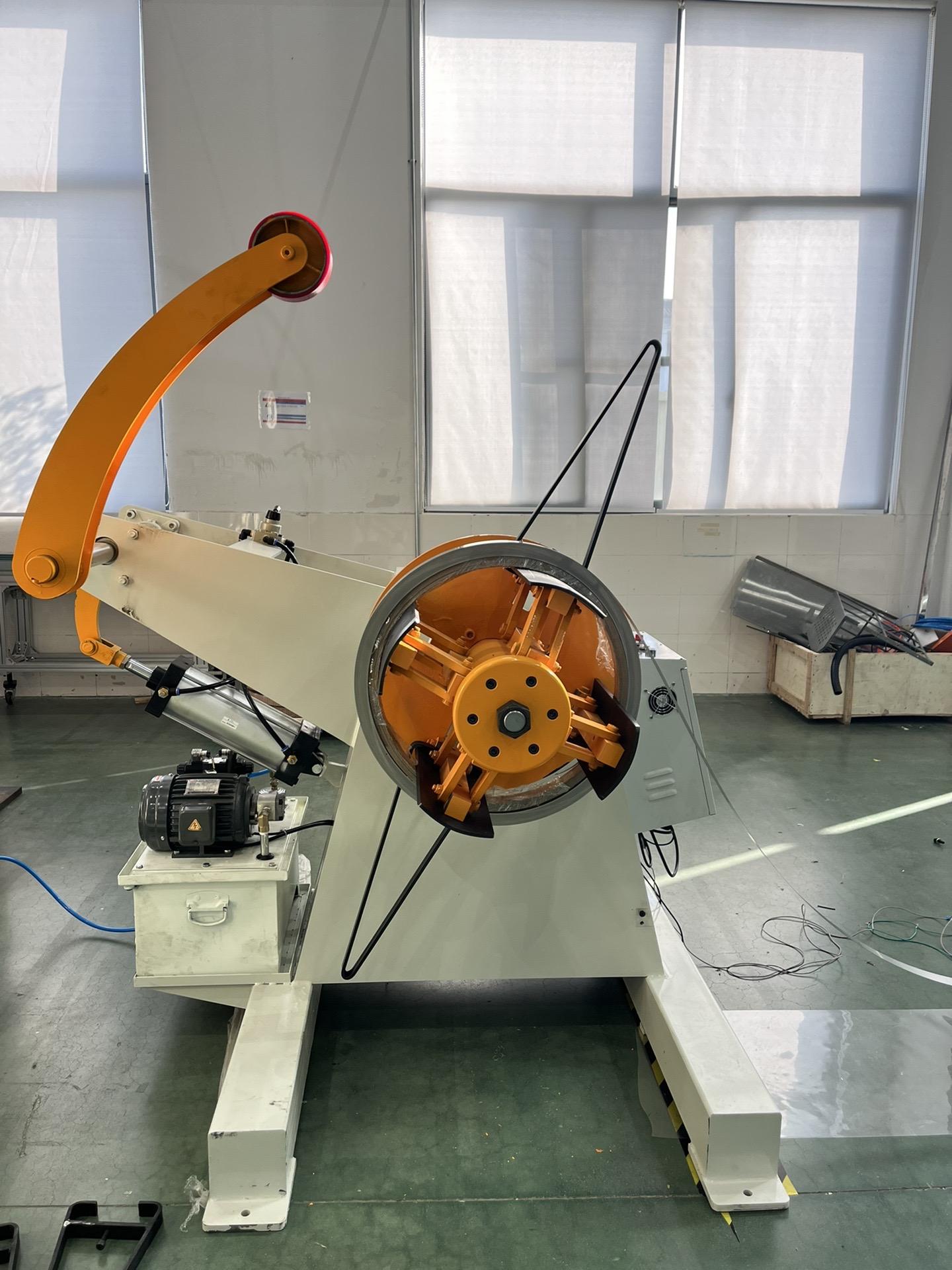
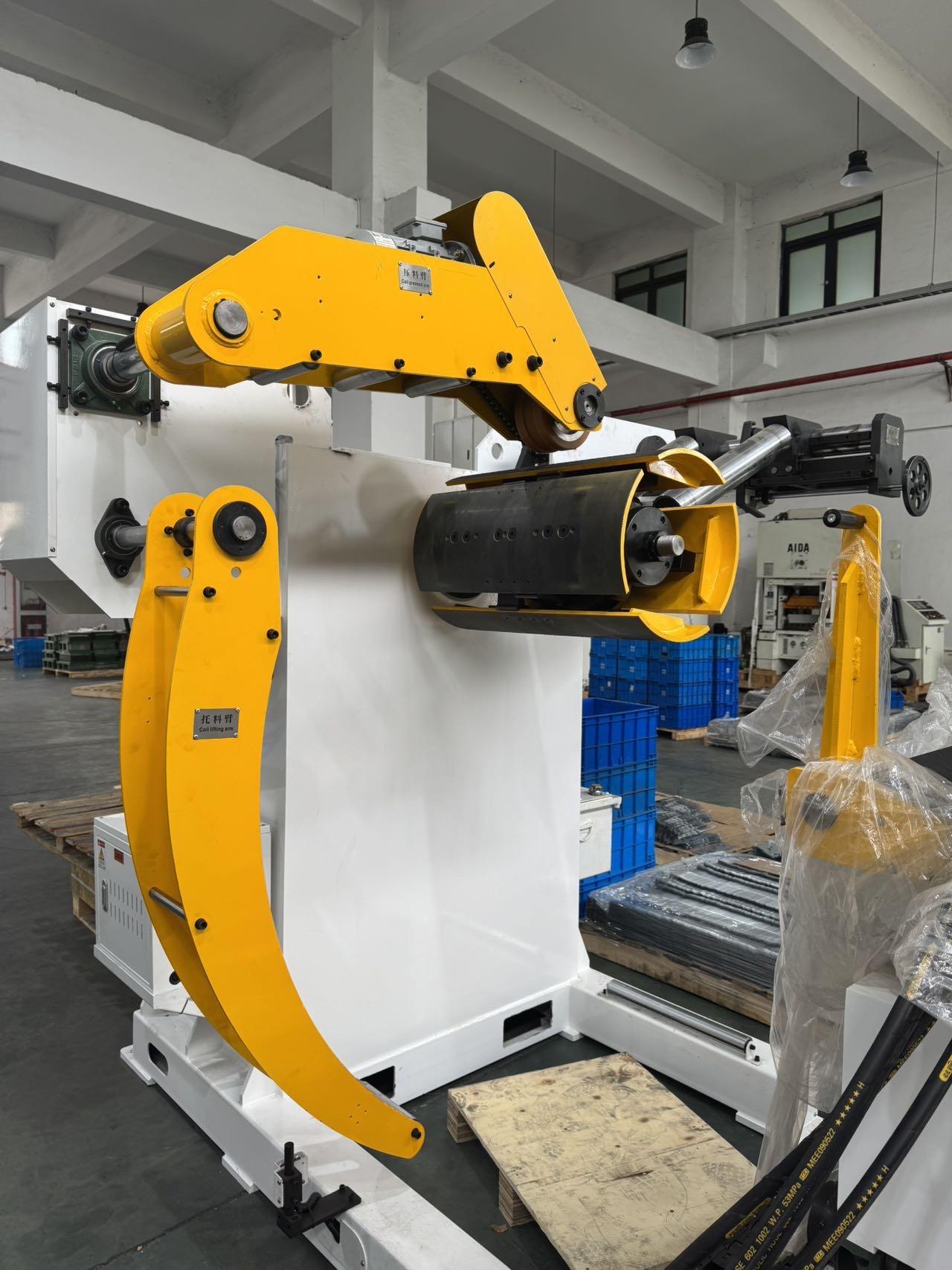
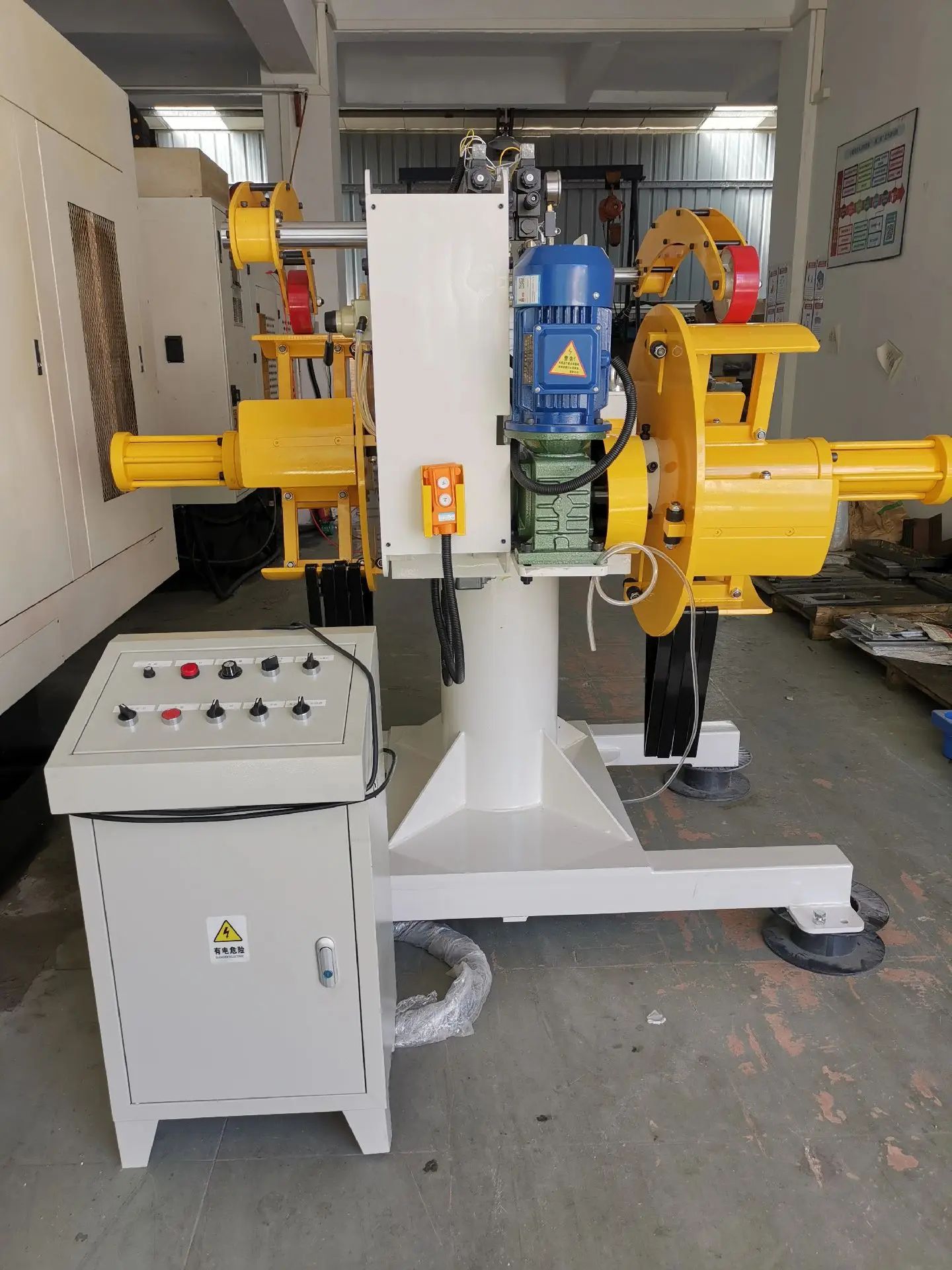
3.1Single-Mandrel Decoiler
- Compact and easy to use
- Ideal for lightweight or medium coils in small-scale operations like home appliance stamping
3.2Double-Mandrel Decoiler (Dual-Station)
- Equipped with two mandrels for alternate coil loading
- Suitable for continuous production lines, reducing coil changeover time
3.3Motorized Decoiler
- Powered by an electric motor
- Offers adjustable speed and is commonly used with leveling and feeding systems
3.4Hydraulic Decoiler
- Designed for heavy-duty, thick, or high-strength coils
- Features hydraulic expansion and pressing arms for enhanced grip and tension control
3.5Powered (Active) Decoiler
- Built-in drive system for automatic speed regulation
- Ideal for tension-sensitive or variable-speed feeding scenarios
3.6Cone-Type Decoiler
- Designed for thick and heavy coils
- Provides enhanced centering and release stability
3.7Combined Decoiler-Straightener-Feeder Machine
- Integrates decoiling, leveling, and feeding in one compact unit
- Saves floor space and is suitable for small-scale automated lines or quick-change tooling environments
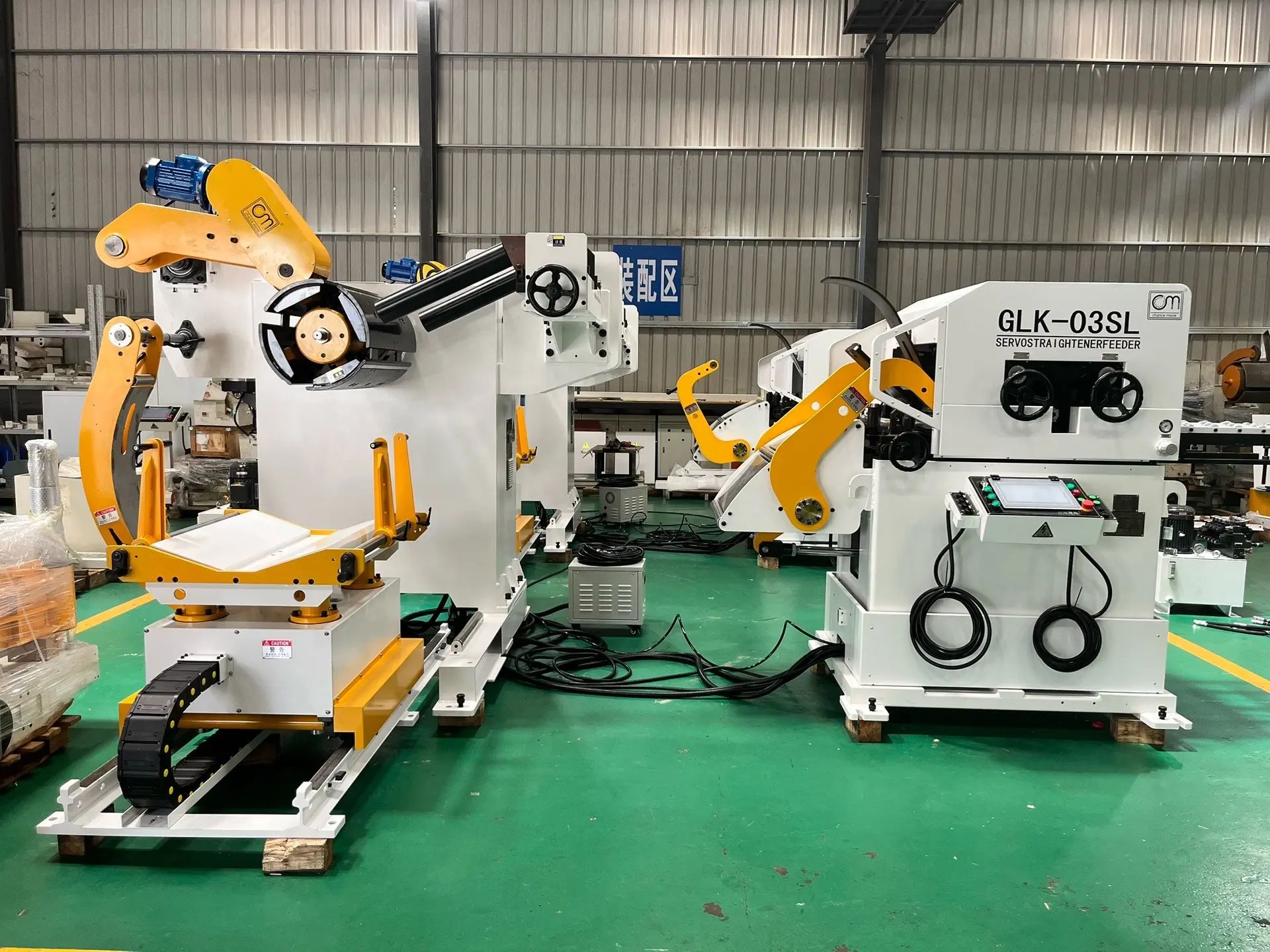
4.0Comparison of Decoiler Types with Coil Specifications
| Type | Key Features | Recommended Coil Thickness | Max Coil Width | Max Coil Weight | Ideal Applications |
| Single-Mandrel Decoiler | Compact and easy to operate | 0.2–2.0 mm | ≤ 600 mm | ≤ 2 tons | Light-duty applications, home appliance stamping, and small parts |
| Double-Mandrel Decoiler (Dual-Station) |
Two mandrels for fast coil changeover | 0.3–2.5 mm | ≤ 800 mm | ≤ 3 tons per mandrel | Continuous production lines requiring minimal downtime |
| Motorized Decoiler | Electric motor drive, adjustable speed | 0.3–3.0 mm | ≤ 1000 mm | ≤ 5 tons | Medium-scale operations, paired with leveling and feeding systems |
| Hydraulic Decoiler | Hydraulic expansion & arms, high grip force | 1.5–6.0 mm | ≤ 1600 mm | ≤ 15 tons | Heavy-duty or high-strength coils, construction, and structural steel |
| Powered (Active) Decoiler | Built-in drive with auto-speed regulation | 0.3–4.0 mm | ≤ 1300 mm | ≤ 10 tons | Tension-sensitive processes, automotive stamping, electronics |
| Cone-Type Decoiler | Enhanced centering for large, heavy coils | 2.0–10 mm | ≤ 1800 mm | ≤ 20 tons | Shipbuilding steel, heavy industrial coil unwinding |
| Combined Decoiler-Straightener-Feeder | All-in-one system, space-saving | 0.2–3.5 mm | ≤ 800 mm | ≤ 3 tons | Compact auto lines, fast changeover, electrical or appliance parts |
Selection Guidelines:
- Thin/light coils (<2mm): Best handled with single-mandrel, motorized, or compact integrated machines.
- Medium thickness (2–4mm): Use powered or hydraulic decoilers, often with a separate straightener.
- Heavy-duty or high-strength steel (>4mm): Requires hydraulic or cone-type decoilers for safety and stability.
- High-frequency coil changes: Dual-mandrel decoilers reduce downtime significantly.
- Limited floor space or small-batch production: Choose the integrated decoiler-straightener-feeder combo.
- High-speed or precision lines: Tension control and servo-driven systems are crucial.
5.0Typical Industrial Applications
Decoilers are used in various continuous coil processing scenarios. Below are key industries and application examples:
| Industry | Application Examples |
| Automotive Manufacturing | Body panels, chassis components, bumpers, reinforcements |
| Construction | Roofing sheets, structural beams, cladding plates, prefabricated profiles |
| Home Appliances | Stamping of washing machine, refrigerator, and air-conditioner housings |
| Roll-Forming Lines | C/Z purlins, door frames, rail profiles |
| HVAC Duct Systems | Round ducts, spiral ducts, TDF duct systems |
| Electronics | Precision sheet cutting, metal brackets |
| Roll-to-Roll Production | Coating, laminating, slitting, printing for high-speed material handling |
6.0Key Parameters for Selecting a Decoiler
When choosing a suitable decoiler, consider material properties, production requirements, space availability, and automation level.
- Coil Width Range: e.g., 300mm – 2000mm
- Coil Thickness Range: e.g., 0.3mm – 12mm
- Maximum Coil Weight: e.g., 1 – 25 tons
- Inner/Outer Diameter: e.g., Ø450mm–610mm / Max Ø1600mm
- Uncoiling Speed: e.g., 10–40 m/min, with variable frequency drive
- Integrated Features: Is leveling, feeding, or cutting needed?
- Control Method: Manual, PLC, or full automation with tension regulation
- Space Constraints: Decide between a stand-alone or integrated system based on factory layout
7.0Maintenance and Safety Guidelines
Routine Maintenance:
- Regularly check moving parts such as the mandrel, pressure arms, and support brackets
- Lubricate the gearbox, motor, and bearings periodically
- Keep the machine clean and prevent dust from entering the control unit
- Calibrate tension control sensors and limit switches as needed
- Inspect all wiring and connections to avoid short circuits or power faults
Safety Tips:
- Equip the decoiler with emergency stop buttons, protective guards, and warning labels
- Ensure operators are professionally trained and never touch moving coils by hand
- Follow proper coil loading and changeover procedures
- Conduct scheduled safety checks and hazard assessments
8.0Decoiler vs Uncoiler vs Straightener: What’s the Difference?
Understanding the distinction between common coil handling equipment helps avoid confusion in system design or procurement. Here’s a quick breakdown:
| Term | Function | Typical Use Case |
| Decoiler | Unwinds coil material in a controlled manner | Start of automated stamping or forming lines |
| Uncoiler | Looser term; may refer to manual or simple unwinders | Small-scale or manual coil processing |
| Straightener | Flattens the coil material to remove curves or memory | Ensures sheet flatness before punching/cutting |
Key Differences:
- Decoiler focuses on rotational control and tension management, often motorized.
- Uncoiler may lack drive systems, relying on pull tension from downstream equipment.
- Straightener does not unwind coils—it only flattens the material after uncoiling.
In most production setups, all three are used together as a coil handling system:
Decoiler ➝ Straightener ➝ Feeder ➝ Press/Shear
9.0Conclusion
As the starting point of any coil-based production line, the decoiler is a crucial piece of equipment that ensures production rhythm, material efficiency, and seamless process flow. With a wide variety of types available, decoilers can be adapted to suit light, medium, or heavy-duty coil applications—from manual handling to smart automation.
By selecting the right decoiler and ensuring proper maintenance and safe operation, manufacturers can achieve higher productivity, better product consistency, and long-term cost savings.
10.0Frequently Asked Questions (FAQ) About Decoilers
What is the difference between a decoiler and an uncoiler?
Technically, both terms refer to the same type of machine designed to unwind coiled materials. “Decoiler” is more commonly used in automated, precision-oriented applications (e.g., metal stamping lines), while “uncoiler” may refer to simpler or manually operated coil holders. However, in practice, they are often used interchangeably.
Do I need a decoiler with a straightener and feeder?
Yes, especially when working with metal coils. A decoiler alone only releases the material. To ensure flatness and precise positioning for downstream operations like punching or cutting, a leveling machine (straightener) and a servo feeder are typically used in tandem.
Can a decoiler handle different coil widths and weights?
Most decoilers are adjustable within a specific range (e.g., 300mm–1600mm width). For frequent material changes, consider a double-head decoiler or a hydraulic model with quick change capability.
How do I choose between a motorized and a passive decoiler?
- Choose a motorized decoiler when you need controlled feeding speed, especially for automated lines.
- Use a passive (braked) decoiler for low-speed or manual applications where precise speed control is not critical.
What safety features should I look for in a decoiler?
Essential safety features include:
- Emergency stop buttons
- Protective covers and guards
- Anti-whiplash arms or tension brakes
- Operator training and maintenance check protocols



